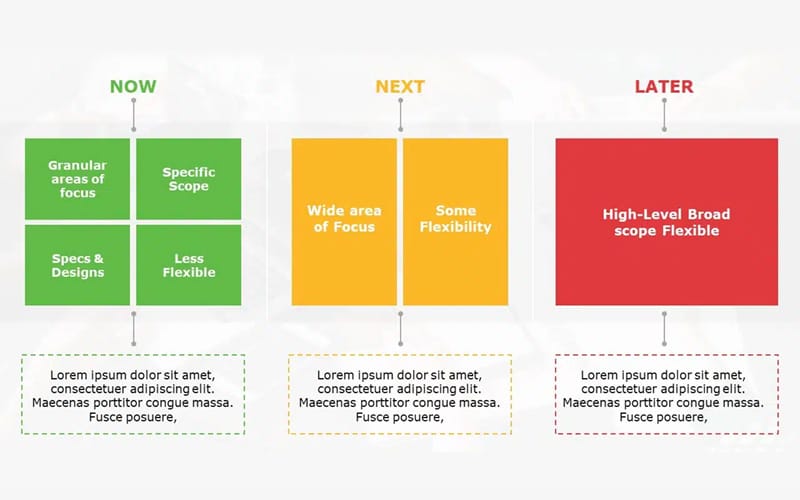SIMPLIFYING PRIORITIZATION WITH "NOW, NEXT, LATER"

In an Agile environment, where needs evolve rapidly and teams must constantly adapt, prioritization becomes a critical challenge. The "Now, Next, Later" model is a visual and flexible approach that helps effectively structure priorities without falling into excessive planning. It helps teams focus on what’s essential while keeping a clear view of the future.
What is the "Now, Next, Later" model?
The "Now, Next, Later" model is a more flexible alternative to traditional roadmaps. It segments initiatives or tasks into three temporal categories:
- Now: What is currently in progress and what the team is actively working on. These items are clearly defined and being executed.
- Next: What is planned for the short term, once the "Now" tasks are completed. These items are well-defined but may still evolve based on priorities.
- Later: What is considered for the future but is not yet an immediate priority. These tasks are often less detailed and may be reconsidered based on changing contexts.
Why use "Now, Next, Later" in Agile project management?
The "Now, Next, Later" approach offers several advantages for Agile teams:
- Simplicity and Clarity: It provides a quick visualization of priorities without cluttering the backlog.
- Flexibility: Unlike fixed roadmaps, this model allows priorities to adapt over time without losing coherence.
- Better Communication: It facilitates discussions among stakeholders by offering a clear view of what is in progress and what is coming up.
- Less Micromanagement: The team remains focused on essential tasks without getting bogged down by excessive planning.
- Alignment with Business Goals: This model promotes continuous prioritization based on real needs and added value.
How to implement the "Now, Next, Later" model?
- Define a clear prioritization framework
Before organizing tasks into the "Now," "Next," and "Later" columns, it’s essential to define prioritization criteria. These could include:- Business impact
- Technical complexity
- Urgency and dependencies with other tasks
- Available resources
- Use a suitable visual tool
The team can use project management tools like Jira, Trello, Miro, Notion, or even a simple Kanban board to organize the "Now, Next, Later" roadmap. - Regularly update the roadmap
The model is not fixed: it should be adjusted based on new information and changes in priorities. A weekly or bi-weekly review meeting is recommended. - Avoid excessive detail in the "Later" column
Long-term tasks should not be too detailed, as they are likely to evolve. It’s better to write down broad ideas or initiatives, without getting into specific specifications. - Communicate with stakeholders
The "Now, Next, Later" roadmap should be transparent and shared with all stakeholders (development team, product owner, sponsors, clients, etc.) to ensure alignment on priorities.
Conclusion
The "Now, Next, Later" model is an effective method for managing task prioritization in an Agile environment. Its simplicity and flexibility make it an excellent tool for structuring the project vision while leaving room for adjustments. By implementing this approach with rigor and transparency, teams can optimize productivity and ensure they are always working on what brings the most value.
